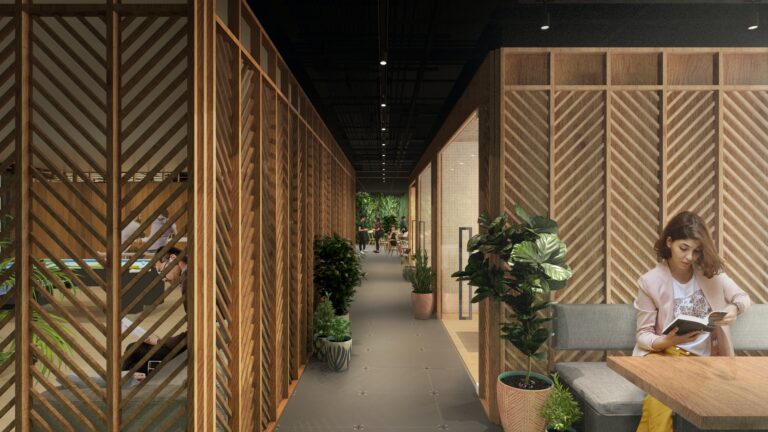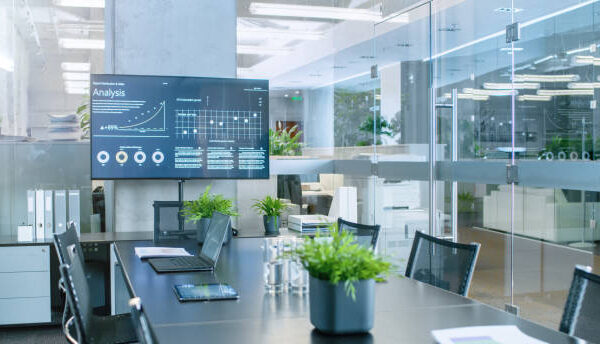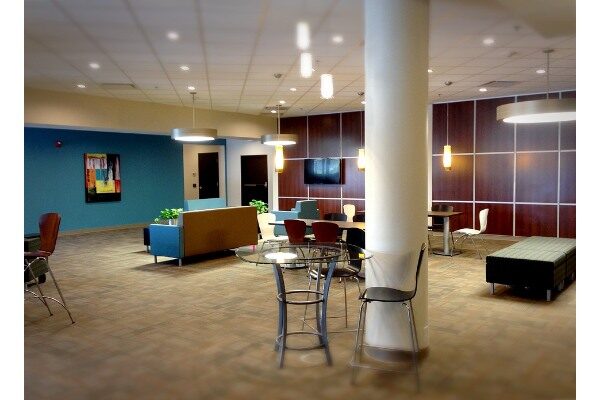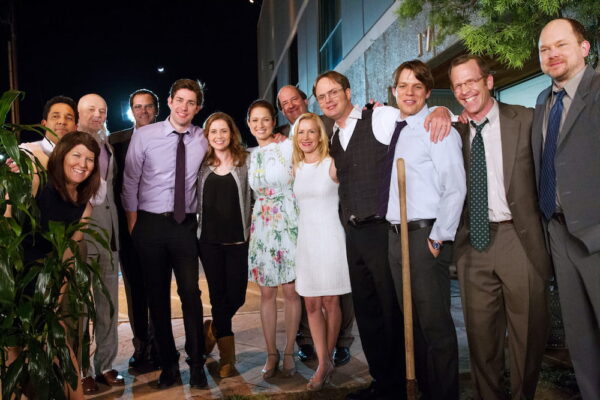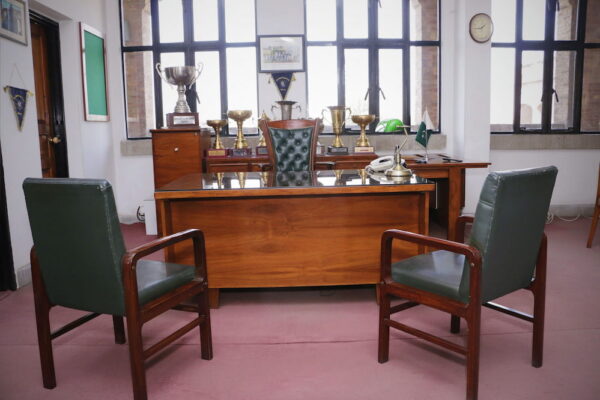Your office’s layout plays a major role in encouraging teamwork, creativity, and productivity.
It has been demonstrated that a creatively designed office environment encourages increase in overall work quality.
Even though it might be challenging to decide how to go about altering the look of your office, observing what other well-known businesses are doing can be a terrific source of inspiration.
It’s safe to assume that many of these designs function effectively for their staff because they have probably put a lot of time and attention into creating their own workplace environments.
What Rules Should You Follow When Designing An Office?
While trying to create an office environment that would make the staff happy, keep in mind what you are unable to achieve.
First, a few recommendations for designing your workspace. For instance, a lot of individuals favor open floor plans because they promote employee collaboration. However, not every organization or firm may be able to use this configuration.
You should also consider how much personal space each employee need. You should plan your layout so that workers have ample room for storage spaces and office desks.
You should also take your office’s illumination into account. When there is natural light coming into their workspace, workers are more productive. Finally, make an effort to incorporate both private and public spaces in the layout of your office so that workers can choose to work quietly if they want to concentrate more on a task or need some peace and quiet away from their coworkers.
According to studies looking at how people perform their best work in an environment, the following are some things you ought to steer clear of while creating your office space: Moderate noise levels are recommended, as well as neutral or calming hues, clean-lined furniture, neutral colors, and art that can inspire and nurture creativity placed around the space.
10 design tips for corporate offices
From My Home
One key office design idea for 2021 is to make it seem like home. The goal is to create a workplace that is as stress-free and brightly colored as possible. Consider recreational swings, ping-pong tables, lounge areas, and colorful and comfortable sofas. Employees may recharge and stay productive throughout the day by setting up locations where they can take brief breaks to refresh their bodies and minds.
However, cozy rooms aren’t just for lounging around; they may also be a productive space! Group gatherings can take place in a relaxed living room setting with couches, armchairs, and coffee tables. Staff members who work in collaborative settings are more likely to feel a feeling of community, inclusion, and belonging.
Building a positive workplace culture can foster good working connections and foster an atmosphere where employees can support one another.
Some of the comforts of home that are frequently offered by employers nowadays include:
- Sofas, chairs, pod seats, and coffee tables that are comfortable
- regions of couches
- locations for breaks with entertainment
- cafés offering free food, coffee, and snacks
- Full-service bars
- outside balconies and terraces
- a fitness center with showers
- bicycle parking
Plan the layout of your office carefully.
You must make sure that your staff has enough room to work comfortably and safely. While there are no requirements dictating how much room each employee must have (like there are in Europe), you must be aware of laws governing health and safety, such as those governing fire safety and accessibility for people with disabilities.
The Modular Workspace
The flexible workspace model is a popular new design idea that is sweeping the business world. Instead of the set and unchanging locations of desks, chairs, tables, and other resources seen in standard office plans, they contain desks, tables, and chairs that are easily moveable and resizable.
Modular construction is used in flexible workplaces to create desks, tables, and seats that are customized to the needs of the workers. As a result, conference tables can be swiftly enlarged to accommodate larger groups and may be moved about more conveniently thanks to their wheels. The dynamic formation of new teams and improved worker collaboration on both short-term and long-term activities are to be anticipated.
Unassigned seating is another aspect of certain flexible workplaces. Simply said, employees have a choice of spaces to work from on any given day and are not assigned to a certain desk or workstation. The current paperless office, where almost all information is digitized by computer, has given this idea a push. As a result, the typical modern office setup now consists of a desk and chair, along with a computer, monitor, mouse, and keyboard. Due to these elements, unassigned seating arrangements at work are more convenient and simple to adopt.
Since today’s projects are becoming more fluid and dynamic, it is believed that unassigned seating will improve employee collaboration. Due to the fact that some workers prefer to work in environments where they can concentrate and focus on their work, it is also believed to improve overall job performance.
Design of Industrial Offices
A significant trend for a while now, industrial office design isn’t going anywhere anytime soon. An purposefully crude and unpolished environment is created for office workers by the industrial office design, which is solely aesthetic in nature.
You’ve undoubtedly seen some of the prevalent industrial design concepts listed below:
- exposed air ducts in the ceiling
- exposed pipes in the ceiling
- visible ceiling beams
- soaring ceilings
- Office space’s exterior is lined with exposed brick walls, while its interior is wall-free, creating more open space.
- Choosing natural wood over treated wood
- instead of wood or carpeted floors, use concrete floors
- exposed light bulbs in overhanging lighting fixtures
The prevalent industrial design style presents your company as outlandish, original, rebellious, or outside the norm. Start-ups and businesses with brand identities founded on minimalism have embraced it as a daring departure from corporate luxury. Yelp’s corporate offices were built using a daring industrial design idea. Check out Heroku’s San Francisco offices for a great example of a raw, unpretentious, and unpolished space!
Practically speaking, compared to other office design styles, industrial office designs are typically more cost-effective. The possibility for tough technical issues that arise when converting an old factory or industrial facility into one that is suitable for office usage in a corporate context could, however, negate the savings in construction expenses. Keep in mind that the style of office design you utilize at work affects the kind of personnel you draw to your business or organization. A younger demographic eager to express their creativity and unusual way of thinking is drawn to industrial office designs.
Make the most of natural light
Natural light has several health advantages and can really boost employee morale and productivity. Try to incorporate big windows, skylights, and lighting that mimics sunshine.
Keep in mind that your welcome is your first impression.
Making a good first impression is essential since the welcome or lobby area is the first part of your business that clients and suppliers will see. It ought to be friendly yet professional.
Ergonomically designed workstations
It should come as no surprise that living a sedentary lifestyle can be harmful to your health if you spend a lot of time at your desk. To solve this problem, today’s cutting-edge office settings are integrating the newest technologies into their workstations.
Office chairs known as ergonomic chairs contain lumbar supports, also known as lower back supports, that may be adjusted. Additionally, the seat height of the chair should be adjustable to allow for a solid footing for the user. The armrests ought to have a height adjustment as well.
Height-adjustable desks: In a perfect world, the workstation would be able to accommodate diverse body types. Additionally, some people prefer to switch between sitting and standing as they work. When a button is pressed, these desks’ electric motors adjust their height.
Sit/Stand Desk Risers: Also known as “standing desks,” these mechanical platforms that sit on top of your desk and hold your monitor, keyboard, and mouse are height-adjustable. When an employee wishes to switch between sitting and standing while working, they are appropriate.
Large plastic balls that have been inflated with air can be utilized as chairs in the form of exercise ball chairs.
The person seated on the ball can bounce up and down on it to get some exercise. The muscles in your body needed to keep your balance on the ball must be worked out while you are sitting on the ball. The advantages of exercise ball chairs for health, however, are still debatable.
To reduce the health concerns connected with prolonged sitting, some employees prefer to alternate between standing and sitting at their desks on occasion. On the other hand, since the mind and body are intertwined, the sit/stand technique and the exercise ball chair can both increase thinking, creativity, and attention in some people.
Embrace nature
Studies have shown that workers are more productive, have more stable moods, and are more creative in environments with natural components like plants and flowers.
Eliminate clutter.
A neat and orderly workspace is crucial for health and safety as well as for your employees’ ability to stay focused, perform more productively, and feel less stressed.
Maintain brand consistency in the decor
Everything in your office, from the wall colors to the furniture to the finishing touches and decorations, should reflect your identity. Make sure you include branding into your office design by thinking about how to do so.
Conclusion
The company culture should be your first priority when constructing an office environment. Consider how you may combine the values of your team into the layout of your workspace.
You might decide to create a workspace that emphasizes sustainability and minimalism, for instance, if those ideals are shared by your organization. To keep things light and airy while including additional environmentally friendly elements like solar panels or water fountains, you may utilize materials like wood and metal.
You might also consult the staff to find out what they would want to see in their brand-new workspace. Just let them do it if they have insightful knowledge about what will work best for them. More useful than any “inspiration board” you could make on Pinterest, it will be.
Once you’ve come up with a design brief, it’s time to start thinking about the specifics, such as the color scheme and furniture options. Here are some suggestions for enhancing the motivation in your office: Select organic materials: Warm and inviting materials like wood and stone are ideal for raising emotions after a hard day at the office.
Your employees’ work environment may have a negative effect. Be sure to give your place careful thought when designing it.

